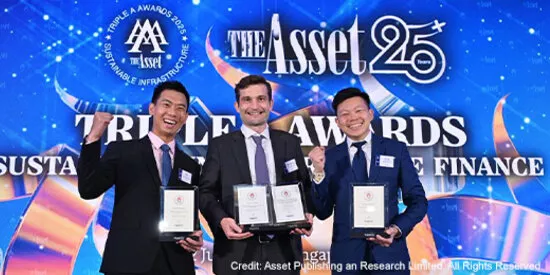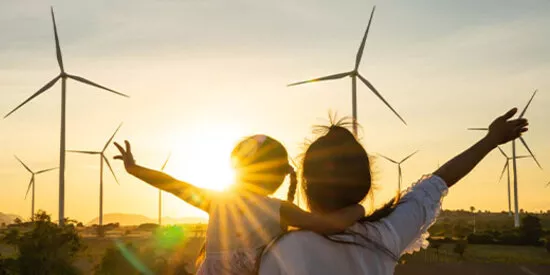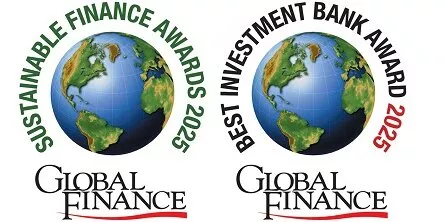
Future-proofing Australia’s commercial real estate market
By Lyndon Wheeler, Head of Real Estate Finance for Australia at Societe Generale
Following a correction in valuations during 2023, investors are turning cautiously optimistic about Australian real estate again and refocusing on the sector’s structural growth, which is being underpinned by heavy investment into higher environmental standards.
Confidence is returning to Australia’s property sector. During 2023, rising inflation and interest rates created a buy-sell gap between sellers who were clinging to outdated valuations and buyers who were looking for lower prices and higher yields. As a result of this stand-off, there have been few trades unless sellers were really motivated and had alternate value accretive uses for the capital and hence transaction volumes collapsed.
This is steadily reversing. Australian inflation is back at 3.4%1 in January, down from more than twice that level; the central bank is on hold and generally expected to cut rates later in 2024; and the economy is weathering the price squeeze. Most pertinently, the buy-sell gap has narrowed, mostly due to sellers' adjusting expectations, with commercial office properties down between 15% and 25% depending on the sector and property – noticeable, but fairly mild compared to historic corrections in this market.
Now that valuations have adjusted and buyers are returning, deals are being done and market participants can refocus on the structural forces that will drive the property sector in coming years.
A return to structural growth
The first trend to mention is one that is actually going into reverse. Working from home, after surging during the pandemic, is slowly but surely in retreat. Lawyers and bankers are not the only ones back in the office 3-4, even 5 days a week: in commercial centres such as Sydney and Brisbane, an estimated 75% of white-collar workers are permanently back at their desks. Both employers and employees are recognising how valuable in-person interaction is when it comes to collaborating, reinforcing culture and training and mentoring junior colleagues. Fears that the office market would never show significant recovery were exaggerated.
That brings more urgency to the real estate sector’s most fundamental task: how to future-proof itself from an ESG, and specifically an environmental, point of view. This is possible: advances in technology mean that modern heating, ventilation and lighting systems are much more efficient and emit far fewer greenhouse gases than in the past. The electrification of whole buildings is now possible, with modern computer controls – increasingly driven by Artificial Intelligence – optimising power use. Heat pumps can replace gas boilers in individual buildings and potentially across whole office clusters, so-called district heating.
Complementing this, landlords are improving their developments with parks, plant-filled atriums and open spaces that improve air quality and encourage social activity. Wood and other organic materials, preferably sourced locally, are coming into fashion for external cladding.
Financing the green transition
While possible, indeed necessary, this ‘greening’ is expensive. And it goes far beyond new builds; as an example around 80% of the offices that will exist in 2050 have already been built, which means there is a huge need for refurbishment and retrofitting – what we call a ‘brown-to-green transition’. The good news is that the capital is available, though not evenly across all investors. Investors are being both cautious and selective and this has led to a flight to assets that are both high quality and green.
One example is a recent loan facility that Societe Generale arranged for a locally based global fund manager to acquire the high-rise office component of a newly completed modern mixed-use building with small floorplates designed for SME tenants and a 5-star Green Star rating as testament to its ESG credentials.
Also closed in late 2023, Societe Generale is proud to have arranged and funded a green loan with a large global alternative asset manager refinancing their interest in a newly built Property Council of Australia’s (PCA) premium grade office tower. In addition to supporting the development of green buildings, Societe Generale has also made debt capital available to support clients with brown-to-green building conversions.
The emergence of new niches
And it is not just offices that are making the transition to green. Industrial facilities, such as warehouses and logistics centres, are adding rooftop solar panels and selling the electricity generated to their tenants or into the grid – a further fillip to what has been the most resilient part of the real estate sector.
A growing number of shopping plazas are installing charging infrastructure for electric vehicles (EVs) in their parking lots. And far-sighted investors are buying up petrol station forecourts: these are often centrally located in suburban neighbourhoods and once retrofitted with EV chargers, a better coffee shop or a larger convenience store, promise to attract a lot of custom.
New types of property including health care facilities, purpose-built student accommodation and multi-family dwellings (known as BTR – Build-to-Rent) are emerging in Australia’s commercial real estate market, while the traditional stalwarts, like offices, are returning to structural growth – underpinned by the futureproofing that is taking place across the sector.
1. Australian Financial Review: Inflation holds steady at 3.4pc, Feb 28, 2024 (https://www.afr.com/policy/economy/inflation-holds-steady-at-3-4pc-20240228-p5f8cp)

The Asset Triple A Sustainable Infrastructure Awards 2025
Societe Generale has been recognised as the “Asia Pacific ESG Project Finance House of the Year”, “Australia Project...

Asia economic and investment outlook for second half of 2025
Where is Asia headed in the second half of this year?

Societe Generale wins Best House for Asia Pacific and Best Fixed-Income Provider at the SRP Asia Pacific Awards 2025
The Structured Retail Products (SRP) Asia Pacific Awards celebrate the top offerings and players in the structured...

Any respite for Japan’s bonds is likely to be short-term
By Stephen Spratt, APAC Developed Markets Rates Strategist at Societe Generale



